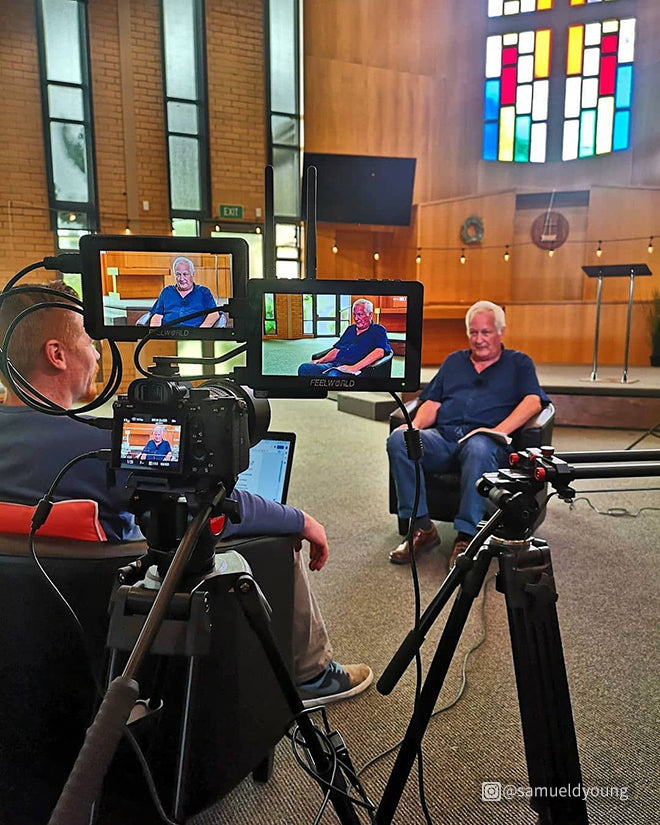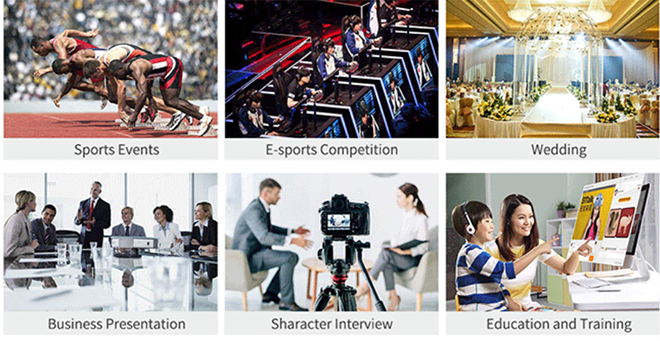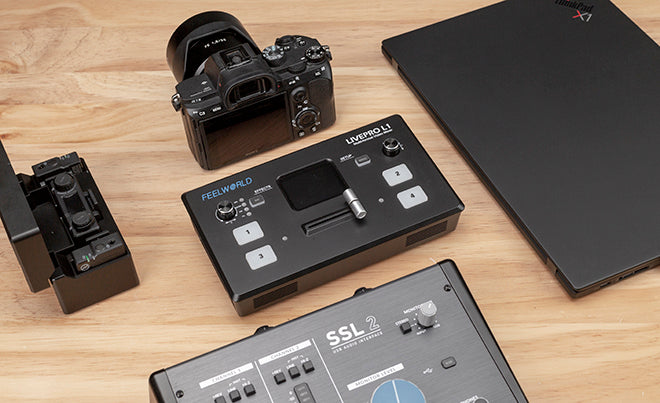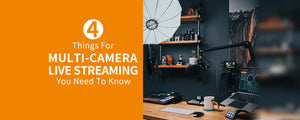4 Things You Need to Know for Successful Multi-Camera Live Video Streaming
Jul 03, 2021
This article describes four things you should know before your multi-camera streaming to ensure you get a high-quality broadcast. This is part of our series on live streaming.
Before we start, let’s learn about what a multi-camera live broadcast is?
Multi-camera live video streaming uses video from several live cameras, and switches between those video feed to create a highly produced, highly professional live-streamed broadcast.

Where is multiple-camera streaming used?
Let's take a look at some popular use cases:
Online sales.
No matter what you sell online, from smartphones to cosmetics, the multi-camera setup comes in handy. Online sales look more professional when broadcasted from different angles, thus attracting more potential clients.
Unboxing.
When unboxing, it is necessary to show what is inside the parcel: equipment, quality of materials, and the appearance of the item from different angles.
Virtual events and conferences.
Using multiple cameras for these events helps viewers feel connected and able to participate in what’s happening.

Multi-camera streaming makes your broadcasts more engaging and interesting than a one-camera stream. It saves you time, as you don’t have to make transitions or compile scenes. When using a multi-camera setup, the quality of the live stream will be determined more by the creative and organizational components than by the cost of your equipment.
Here's what you need to know for successful multi-camera streaming:
1.Choose basic equipment
To start streaming multiple live video cameras you need at least two cameras. Yes, it’s that simple. You can even use your laptop camera or you can purchase a DSLR or video camera in advance. If it is an external camera device, you need to be equipped with a capture card or a video switcher.

FEELWORLD LIVEPRO L1 V1 Video Mixer:
FEELWORLD LIVEPRO L1 V1 is an ultra-small signal switcher with 4 HDMI inputs, suitable for multi-camera live production and with USB3.0 fast to real-time live streaming.
One person's online live broadcast and multi-signal control will become simpler and easier than ever before.
Let live streaming more professional and much easier, use for churches, weddings, video conferencing, games, E-commerce sales live, or any live events, social media live streaming.
2.Secure Cabling And Devices
You can have as few as two or three cameras, depending on the room, some or all of the cameras may need to be set up on platforms. Try to keep cameras out of high-foot traffic areas. Tape down any cabling that someone walking by might trip over and kick out.
3.Test Your Internet
It's important to make sure you've got a strong enough connection to stream video. There are plenty of free sites you can use to test your internet speed, though you'll want to ensure you choose one that shows your upload speed.
4.Run A Test Stream
Once you have all your equipment set up, I always recommend that you test the stream. If you're new to streaming, in a new environment, or using new equipment, it's important that you set up multiple tests just to be safe.

